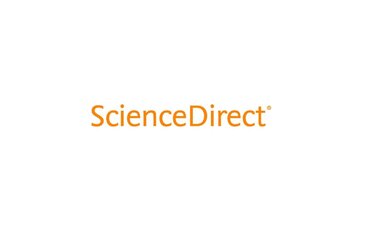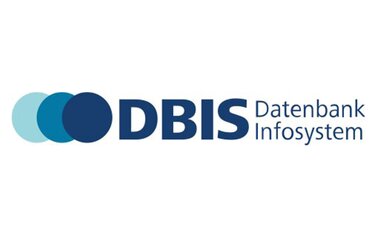COSTS
**PAY ATTENTION** Due to funding cuts, contrary to the information below, no more open access publications can be financed from central DIT funds this year by Dr. Seffer!
The financing responsibility shifts in the case of open access: while in the case of closed access, readers or the library purchase the journal, issue or book, with open access, access to the publication is unrestricted and free of charge. Many publishers are therefore shifting their revenue side towards publication charges and related Open Access Article Processing Charges (APC) or Book Processing Charges (BPC). Therefore, please make sure before publishing that you can finance this cost or that this cost can be absorbed (see Form: Application for the assumption of charges for open access publications. Contact person is Dr. Seffer (kristin.seffer@th-deg.de); please note that cost absorption does not take place automatically and every time an application is submitted).
Exceptions to this are so-called Diamond Open Access publishers and journals without BPC or APC. As a rule, these are run or financed non-commercially by professional societies, universities or libraries, which is why they are not dependent on large monetary incomes.These journals are characterised by standard quality criteria such as ISSN and the assignment of persistent identifiers, a scientific-qualitative orientation with peer review, 100% open access through the granting of open licences, no publication fees, non-discrimination (no exclusion of certain affiliations or countries) and the fact that they are owned or administered by the scientific community (‘scholarly led’ ). The THD supports such models, on the one hand through its own journals Bavarian Journal of Applied Sciences and Journal of Applied Interdisciplinary Research, and on the other hand by supporting the transformation of wt Werkstattstechnik online, Bewegtbilder, and Yearbook of Moving Image Studies to Diamond Open Access.
Diamond Open Access journals without publication charges can be searched via the following sources:
Any research funded by the European Commission can also be published without APC in Open Research Europe.
When you publish in closed access, you sometimes have the option of free open access Secondary publication.
Finding suitable open access journals
There are various support platforms and journal recommenders to facilitate the search for suitable journals. Please note that all open access business forms, and not just Diamond Open Access, have been listed here. Check the cost situation accordingly:
- oa.finder: this platform takes into account existing open access contracts of the respective institution, lists the relevant journals to which the contract applies and makes them searchable via keyword or title searches.
- B!SON: here, you can enter the conceived title, abstract and, if available, the sources already cited; a list of suitable open access journals with a corresponding relevance score is then displayed.
- Jane – Journal/Author Name Estimator (Show extra options – Choose your open access options: “Search only open access journals”): here, too, you can enter the title and/or abstract and get a list of suggestions.
- Recommendations from open-access.network depending on the discipline: experts from the respective subject areas have compiled information on relevant open access journals here.
- Publisher-specific journal recommenders, e.g., SpringerNature Journal suggester, Elsevier JournalFinder, Wiley Journal Finder, Taylor & Francis Journal Suggester, etc. with partial filter and selection options by open access
Two APC-free (see Costs) Diamond Open Access journals hosted at the university are the Bavarian Journal of Applied Sciences and the Journal of Applied Interdisciplinary Research.
Identifying predatory publishers
In order to find the right journal for an open access publication, you should check the journal in advance for reliability (also see Think. Check. Submit) or use white lists such as the Directory of Open Access Journals (DOAJ). There are so-called pseudo-publishers/predatory publishers (Predatory publishers) who promise rapid publication but offer no or inadequate quality assurance (peer review).
The following points should be considered positive for a newly published scientific journal: an established publisher, an affiliation with a professional society, verifiable evidence in relevant databases, an official journal impact factor, the use of persistent identifiers (ISSN, DOI), transparent policies for the long-term archiving of publications and research data, renowned editors and editorial team, and established and serious peer review procedures with expert reviewers.
In addition to the lack of the above, the following points are also considered negative: self-calculated or imaginary impact factors, the false indication of indexing in subject-specific databases under Abstracting and Indexing Services, the publisher's registered office at accommodation addresses or addresses in Asia that cannot be verified via Google Maps, and the use of spam e-mails and mass invitations to publish.
See also the checklist of characteristics of dubious journals on this topic.
Deal and other open access conctracts on DIT
SpringerNature
The DIT participates in the SpringerNature contract of the DEAL project.
There is a discount on the publication charges (APCs) for publications in open access journals of the SpringerOpen and BioMed Central brands. For the journal list and discounted APCs, see https://keeper.mpdl.mpg.de/f/a6dc1e1ed4fc4becb194/?dl=1, column “Current DEAL Cost Contribution” under publishing model “Fully Open Access”. Please note that the APC is subject to an additional €150 net service fee from MPDL Service gGmbH and 19% VAT on the subsequent net total amount. A publication charge of €2,600 net plus a €150 net service fee from MPDL Service gGmbH and 19% VAT are payable for SpringerNature subscription journals. An “opt-out” is not possible.
Therefore, please make sure before publishing that you can finance these costs or that they can be absorbed (see Form: Application for the assumption of charges for open access publications; only possible in case of “Fully Open Access”. Contact person is Dr. Seffer (kristin.seffer@th-deg.de); please note that cost absorption does not take place automatically and every time an application is submitted).
Nature
The DIT participates in the Nature consortium license negotiated by the German National Library of Science and Technology (Technische Informationsbibliothek, TIB).
This allows you to publish Open Access free of charge in Nature and in all other hybrid Nature Research and Review Journals. Only articles of the type “Research Article” in subscribed journals are covered by this agreement. See "Eligible Journals" under https://www.springernature.com/gp/open-science/oa-agreements/germany/mpdl-nature-ta → Publishing open access or the direct link: https://resource-cms.springernature.com/springer-cms/rest/v1/content/18645238/data/v16
The Open Access journals, such as Nature Communications and Scientific Reports, are excluded from this. These are subject to costs, some of which are discounted via DEAL. You can find specific cost information at https://keeper.mpdl.mpg.de/f/a6dc1e1ed4fc4becb194/?dl=1, column “Current DEAL Cost Contribution” with filter on “Nature Portfolio”.
Wiley
The DIT participates in the Wiley contract of the DEAL project.
There is a discount on the publication charges (APCs) for publications in open access journals of the Wiley and Hindawi brands. For the journal list and discounted APCs, see https://keeper.mpdl.mpg.de/f/fed54cfc4e7f4c178137/?dl=1, column “EUR APC, Discounted (20%)” under revenue model “OA”. Please note that the APC is subject to an additional €150 net service fee from MPDL Service gGmbH and 19% VAT on the subsequent net total amount. Publication charges of €2,200 to €3,150 net (see column "EUR PAR fee" under revenue model "HOA") plus a €150 net service fee from MPDL Service gGmbH and 19% VAT are payable for Wiley subscription journals. An “opt-out” is not possible.
Therefore, please make sure before publishing that you can finance these costs or that they can be absorbed (see Form: Application for the assumption of charges for open access publications; only possible in case of “Fully Open Access”. Contact person is Dr. Seffer (kristin.seffer@th-deg.de); please note that cost absorption does not take place automatically and every time an application is submitted).
Sage
University publishers can publish as Corresponding Authors in all hybrid journals in the package (title list) in open access free of charge and without restriction as part of the SAGE Premier contract package. The following article types are authorised: original research papers, review papers, brief communications, short reports, case reports.
Your affiliation will be recognised via the Sage portal and you will receive an e-mail from the publisher with a link to confirm the open access option. Please note the time frame stated in the e-mail, after which the free open access option may be cancelled. You can find more information here: https://us.sagepub.com/en-us/nam/open-access-agreements-at-sage/germany
Elsevier
The DIT takes part in the Elsevier agreement of the DEAL project.
Publication fees (APCs) for publications in Elsevier open access journals are discounted by 20%, while those for Cell Press and The Lancet receive a 15% discount. For the list of journals and discounted APCs, see https://keeper.mpdl.mpg.de/f/7e57105c4bdf452c93fa, column “DEAL Cost Contribution (current)” under the publishing model “Fully Open Access”. Please note that the APC is subject to a €100 net service fee charged by MPDL Service gGmbH and 19% VAT on the subsequent net total amount.
For subscription journals, you can find the publication fees at https://keeper.mpdl.mpg.de/f/7e57105c4bdf452c93fa, column “PAR Fee or CP/TL APC (current)“. Currently (19 November 2025), the flat rates for Elsevier subscription journals are €2,575 net and for Cell Press and The Lancet subscription journals €6,708 net, plus a €100 net service fee charged by MPDL Service gGmbH and 19% VAT. “Opting out” is not possible. From 2026, costs are expected to rise to €2,652 instead of €2,575 net at Elsevier and to €6,976 instead of €6,708 net at Cell Press and The Lancet, plus the fees and VAT mentioned above.
Therefore, please ensure that you can meet these fees or that they can be covered before publishing (see the Application for Coverage of Fees for Open Access Publications form, only possible for “fully open access”; contact person is Dr. Seffer. Please note that fees will not automatically be covered in all cases where an application is submitted).
Secondary publication
In the open access context, a secondary publication is the freely accessible publication of a scientific work that appears before, simultaneously with or after the publisher's version. This practice, also known as "green open access" or the "green route", refers on the one hand to the publication of preprints in subject-specific repositories such as arXiv bioRxiv or medRxiv, and on the other to the subsequent free access to closed access publications.
Certain conditions must be observed in the case of secondary publication. The self-archiving policy of the respective publisher must be observed; see Sherpa Romeo as a possible research platform. For example, secondary publications may often only be in the form of a preprint or postprint, and not in the version published by the publisher (VoR). Often, embargo periods must also be observed, i.e., a secondary publication may only take place after a certain period of time has elapsed since publication by the publisher. A reference must always be made to the original publication; publishers sometimes stipulate certain details or provide sample sentences, for example:
"This is the pre-peer reviewed version of the following article: [FULL CITE], which has been published in final form at [Link to final article using the DOI]. This article may be used for non-commercial purposes in accordance with the Publisher’s Terms and Conditions for Use of Self-Archived Versions."
As a rule, secondary publication may take place on appropriate platforms such as institutional or subject-specific repositories. Often, publication on personal websites of the teaching unit or institution is also permitted. Many publishers, however, do not allow distribution in commercial academic networks (e.g., ResearchGate, academia.edu).
You can use the Dissemin service if you want a secondary publication of several or all of your publications.
Open access policies of third-party funders
The Sherpa Juliet platform provides an overview of the open access policies (mandatory or recommended rules or guidelines) of all third-party funders.
In all EU-funded projects in particular, open access to published project publications (e.g., by using Open Research Europe) and organised research data management are mandatory.








 Use for own, scientific purposes
Use for own, scientific purposes Passing on content to third parties
Passing on content to third parties 
